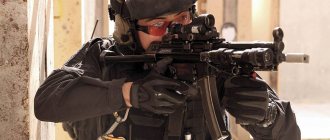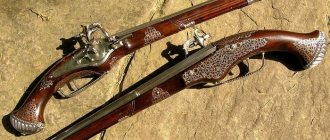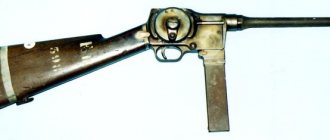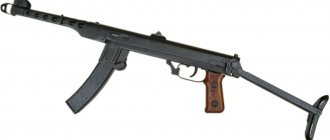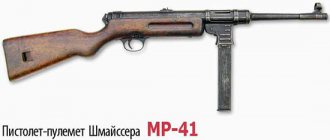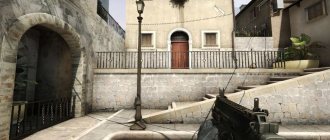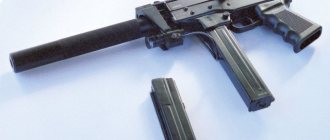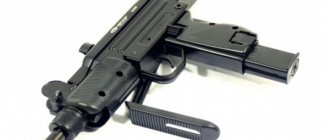History of the PM-63
Preparations for its serial production began in 1964. This submachine gun was officially adopted by the Polish military and law enforcement agencies in 1965. Its official name is Pistolet Maszynowy wzor 1963 . Full production did not begin until 1967. Supplies to the Polish Army and Law Enforcement only appeared in the late 1960s.
It soon became the standard weapon used by reconnaissance units, special forces, platoon leaders, staff officers, vehicle and artillery crews, anti-tank missile brigades and some non-front-line units and even elite anti-terrorism teams.
Approximately 70,000 – 80,000 of these machines were manufactured when production ceased in 1977. Together with the Czechoslovakian vz.61 Scorpion, these were the only Eastern Bloc machine guns produced in large numbers. However, operational service revealed that the Polish PM-63 RAK was a rather poor design and had a number of design flaws. Some of them have been corrected over time.
Polish soldiers did not like these weapons. In 1984, Polish military and law enforcement agencies adopted the new Glauberit PM-84 submachine gun as the successor to the PM-63 RAK. The new PM-84 Glauberyt was a much better design.
In service
- Poland Poland - in the 1960s - 2000s, it was in service with certain categories of military personnel (RPG shooters and armored vehicle crews) and special forces of the Polish army, police and railway guards[2]
- GDR GDR - a number were in service with the special forces of the GDR people's police ( Bereitschaft Volkspolizei
) under the name
klein-Maschinenpistole PM-63
[2] - Vietnam Vietnam - a small number, in the 1970s they were used as personal weapons by tank crews of the Vietnamese People's Army[2]
- Cuba Cuba - small quantity[2]
- Panama Panama - several PM-63s were in service with the Panamanian armed forces until December 1989, when, during the US invasion of Panama, all Panamanian armed forces were disarmed and disbanded[2]
- Germany Germany - after the reunification of Germany, submachine guns, previously in service with the People's Police of the GDR, passed to the German police and were used for some time by the police of the federal state of Saxony [2]
PM-63 for export
A number of PM-63 RAK assault rifles were exported to Cuba, East Germany, Iraq, North Korea, Vietnam and possibly some other countries. From time to time, this machine gun appears in various military conflicts or ends up in the hands of terrorists or irregular military formations.
The PM-63 was a relatively light and compact weapon designed for close combat. It was significantly lighter and smaller than the modern Heckler & Koch MP5. The PM-63 is well balanced and can be fired with one hand like regular pistols.
Notes[edit]
- Wozniak, Ryszard. Encyklopedia najnowszej broni palnej – volume 4 RZ. Bellona. 2002. pp32.
- ↑ Modern Warfare
, published by Mark Dartford, Marshall Cavendish (London) 1985. - ^ a b c d https://www.forgottenweapons.com/submachine-guns/pm-63-rak/
- ^ a b c d https://modernfirearms.net/en/submachine-guns/poland-submachine-guns/pm-63-eng/
- Wozniak, Ryszard. Encyklopedia najnowszej broni palnej – volume 4 RZ. Bellona. 2002. P. 11.
- Wozniak, Ryszard. Encyklopedia najnowszej broni palnej – volume 4 RZ. Bellona. 2002. pp12.
- Wozniak, Ryszard. Encyklopedia najnowszej broni palnej – volume 4 RZ. Bellona. 2002. Page number unknown.
- ^ a b c d e http: //www.m military-today.com/firearms/pm63_rak.htm
- "Image: PYvRahs_Z8o.jpg, (1280 × 720 pixels)". 4.bp.blogspot.com. Retrieved September 2, 2015. [ citation needed
] - https://nationalinterest.org/blog/buzz/polish-pm-63-one-scary-ultra-compact-automatic-weapon-166088
- https://www.forgottenweapons.com/submachine-guns/pm-63-rak/
- ↑
Katz, Sam (March 24, 1988).
Arab armies of the Middle East wars (2)
. Fighters 128. Osprey Publishing. paragraph 45. ISBN 9780850458008. - https://web.archive.org/web/20210216122633/https://www.srilankaguardian.org/2007/11/lttes-rare-infantry-weapons.html
PM-63 ammunition
The PM-63 machine gun was manufactured for Soviet Makarov 9x18mm ammunition. At the time, Poland was part of the Warsaw Pact and used standard Soviet ammunition. However, Soviet 9x18mm ammunition was weak compared to the 9x19mm Parabellum ammunition that was standard in the West.
The PM-63 is a shock-controlled weapon that fires from an open bolt. It has a fire rate reduction mechanism that has reduced the fire rate from 1000 rpm to a more controlled 600-650 rpm.
An unusual feature of this submachine gun is the slide protruding in front of the barrel. These weapons can be cocked in the traditional manner or simply lug-attached to solid objects such as walls, the ground, and so on. Thus, the shooter could easily cock the weapon alone.
The protrusion also acts as a compensator, which deflects some gases upward and reduces the rise along the muzzle surface. When the weapon was released, the slide moved backward in the same way as on pistols. Although the soldiers were afraid that the back-and-forth sliding would knock out their teeth or damage their eyeballs.
Rotameter RM-02-0.63 guz
Rotameter type RM, RMA, RMF GOST 13045-81 are constant pressure differential devices and are designed to measure the volume flow of smoothly varying homogeneous flows of clean and lightly contaminated liquids with dispersed inclusions of foreign particles. Rotameters with local readings such as RM, RMA, RMF GOST 13045 are designed to measure the volumetric flow rate of smoothly varying homogeneous flows of clean and lightly contaminated liquids (for modification of RMF aggressive liquids), air and gases (subject to individual calibration on a given gas) with dispersed inclusions of foreign particles, neutral to steel 12Х18Н9Т for RM (to fluoroplastic-4 for RMF) and glass of the HS and THS brands. The calibration of rotameters is individual, carried out by the manufacturer using water or air.
Technical characteristics • Temperature of the measured medium, (°C): -30…+100. • Ambient air temperature, (°C): -30…+50. • Slave. pressure (kgf/cm2): — 6.
Features of PM-63 automation
The PM-63 is a selective fire weapon, although there is no conventional fire mode selector. The trigger itself is used to control the firing mode. Pulling it halfway will give you a single shot, while pulling it full will give you full automatic fire. Although this progressive trigger concept was not new, it was not widely used. The magazine in this weapon is located inside the pistol grip. This feature reduced the overall dimensions of the weapon.
Description
Automatic weapons work on the principle of using the recoil of a free shutter. The return spring is located under the barrel. To reduce barrel toss when firing, there is a spoon-shaped compensator protrusion in the front part of the bolt casing, which can also be used to cock the bolt with one hand: the weapon is rested by the compensator on any hard surface and moved forward until cocked. Shooting is carried out from an open bolt. There is no translator for the type of fire: when the trigger is pressed halfway, a single shot occurs, when pressed fully, a burst occurs. The stock and front handle are folding[1].
Submachine gun store
The location of such a magazine was influenced by the experimental MCEM-2 submachine gun, which was developed in 1944 in the United Kingdom by another Polish weapon designer, a colleague of Piotr Wilniewczyk. MCEM-2 was also exposed to the Czechoslovakian Sa vz.23 assault rifle and the Israeli Uzi.
This weapon originally appeared with a 25-round magazine. However, there were problems with this long magazine, as soldiers carried this weapon in a holster with the magazine removed. Otherwise it will stick out excessively. It was impossible to open fire immediately after the weapon was removed from the holster.
Later, a shorter 15-round magazine was introduced to solve this problem. The original exposed magazine may be accidentally engaged and fall out of the holster at any time. Since the weapon's introduction, the magazine capacity has been revised twice to correct this issue.
Mauser MP-57
The developments of two and “Erma” were considered the most successful. Working for the latter company at that time... was the French weapons inventor Louis Bonnet de Camille, who designed a submachine gun very similar to both the Czech and Israeli models. It received the designation M56, but, having produced only 10 copies of the new submachine gun, the company abandoned its further development. It is possible that it did not have the production capacity necessary to fulfill the military order. In general, it turned out that a certain Fenner Achenbach financed this project, but transferred the work to Camille, where it received the designation M-57.
MP-57 – device diagram.
The design of the new submachine gun was improved: a folding stock was added, and the folding front handle under the barrel was improved so that when folded it would be located horizontally.
Mauser MP-57 submachine gun. Left view. The mode switch is clearly visible right above the trigger. There is an automatic handle safety at the rear of the handle. Magazines are inserted into the pistol grip. A folding stock is placed on top of the receiver. Below the barrel there is an additional handle with a figured cutout at the bottom.
The MP-57 used a rolling bolt and was fed ammunition from easily accessible 32-round magazines from the MP-40. Moreover, with a weight of 3.15 kg without a magazine, the Mauser was significantly lighter than the Uzi, which weighed 3.5 kg. Its total length was 610 mm, folded - 430. The rate of fire was high - 800 rounds / min. However, in the end, the Bundeswehr did not accept the MP-57 into service, but opted for the Uzi, giving it the designation MP-2 (1959). A total of 25 submachine guns of this type were manufactured. It was tested in different countries, but there was no order for it.
MP-57 with the butt fully extended and the handle folded forward.
Submachine gun sight
The PM-63 has simple iron sights. The rear flip-up sight is adjustable and has 2 settings for 75 and 150 meters. However, the front sight post was mounted on top of a slide, which reciprocated during firing. So only the first shot was more or less aimed. The shooter could not accurately aim the weapon when firing. This was a serious drawback of this weapon. The effective firing range is only about 50 meters due to the weak shot and low accuracy.
5:02 / 11/14/18 Polish submachine gun RM-63
It's no secret that competitions between gunsmiths are the main driver of the development of firearms in peacetime. The desire to come up with something new, with higher characteristics, is explained not even by a financial issue, but by the recognition of their colleagues, which for most designers is a much more valuable result of their work than payment for their work.
Polish submachine gun PM-63 RAK / Photo: M.okidoki.ee
Although something has changed in the world recently, and financial interest is not only the main, but often the only reason for the hard work of gunsmiths. Perhaps it is for this reason that recently there have not been so many new worthwhile weapons.
But let’s not talk about sad things, in this article we will try to get acquainted with the Polish submachine gun, which is a kind of “answer” to the Czech gunsmiths to the Scorpion Vz submachine gun. 61.
Polish submachine gun PM-63 RAK / Photo: M.okidoki.ee
The “Answer” turned out to be very interesting and had its own unique features that made this weapon simpler and easier to use. Piotr Wilniewczyk is considered the creator of this weapon, but in addition to him, other designers also worked on the submachine gun project: Ernest Durasiewicz, Ryszard Helmicki, Tadeusz Bednarski, so the appearance of this PP is not the merit of one person, but the result of the well-coordinated work of a group of designers. At home, the submachine gun was named RAK; throughout the world it became known as RM-63. Initially, the weapon was designed for the 9x18PM cartridge, later variants of the submachine gun appeared for the more powerful 9x19 and the weaker 9x17.
An interesting point is that very often this weapon is classified as a pistol. The fact is that the RM-63 has an open bolt casing, like most pistols, while most submachine gun models have a hidden bolt that moves inside the weapon. Despite this, it is clear at first glance that the weapon was designed as a submachine gun, with basic automatic rather than single fire. This is evidenced by the folding metal stock, the handle for the second hand, and the location of the pistol grip of the weapon.
Photo: opoccuu.com
Despite the unusual bolt of the weapon, the RM-63 submachine gun operates on the most common principle - automatic blowback. Thanks to the large mass of the bolt casing, the rate of fire from a submachine gun is reduced, which is important for such a weapon. What is not entirely common in this submachine gun is that the shot occurs from an open bolt, that is, to fire the bolt casing must be pulled back, where it is fixed before the trigger is pressed.
When fired, the bolt skin breaks away from its rear point and moves forward, removing a new cartridge from the magazine and inserting it into the chamber, after which the primer breaks and, as a result, the shot is fired. Powder gases, trying to push the cartridge case out of the chamber, slow down the residual movement of the bolt casing forward and through the cartridge case transmit an impulse sufficient to roll back the bolt casing in the opposite direction. Due to the fact that part of the energy is spent on braking the bolt casing, the weapon can be easily adapted for more powerful cartridges than 9x18, which is what happened with the version of the submachine gun chambered for 9x19 cartridges. Due to its automatic operation scheme, or rather the fact that the shot occurs from an open bolt, the weapon is not distinguished by high accuracy of the first shot.
Photo: opoccuu.com
But all of the above is far from all the interesting points in this weapon. In its calm, uncocked position, the pistol can be seen protruding far forward under the barrel. This protruding part of the shutter casing has two purposes. Firstly, with the help of this protrusion under the barrel, the muzzle flame and powder gases are directed upward when firing, which reduces the toss of the weapon when firing. Secondly, with the help of this protrusion, you can move the bolt casing to the rearmost position using only one hand, resting the submachine gun with its protrusion against any hard object and pressing on the weapon. This solution is quite original, although one can argue about the effectiveness of such a part as a muzzle brake.
Polish submachine gun PM-63 RAK / Photo: M.okidoki.ee
The weight of the RM-63 submachine gun is 1.8 kilograms without cartridges with a weapon length of 333 millimeters, excluding the extended butt. The barrel length is 152 millimeters. The weapon is fed from detachable box magazines with a capacity of 25 rounds, which are inserted into the handle of the weapon, or shorter magazines, with a capacity of 15 rounds, which do not protrude far down beyond the pistol grip. The weapon's rate of fire is about 650 rounds per minute, which allows for more efficient use of the cartridges loaded into the magazine.
Photo: opoccuu.com
This submachine gun was primarily intended for arming the crews of armored vehicles, arming artillery crews, in general, all those for whom handguns are not the main means of fighting the enemy. The life of the RM-63 submachine gun was short-lived; already in 1974, the weapon was completely discontinued and replaced by another more effective model. The weapon was used until the 90s of the last century. Even after this submachine gun was removed from service in the army, it was used by the police for a long time. The bold decisions that were implemented in this software allow us to talk about the uniqueness and features of this software.
Photo: opoccuu.com
Perhaps some aspects of the RM-63 submachine gun were questionable, perhaps something needed to be done differently, nevertheless, the sample went into mass production and became widespread not only in its homeland, but also far beyond its borders .
Thus, this weapon was quite actively used by Vietnam, Cuba, this submachine gun became widespread in the GDR, China even launched its own production of this weapon under the name Type 82, but history is silent about the availability of a production license. This quite interesting and original submachine gun was created in Poland in 1963. Source : Military Review publication, Kirill Karasik 12
Tags: Armament, small arms, Poland, RM-63 submachine gun
Walther M.P.
Finally, the Germans managed to create a very simple and unpretentious “Walter” MP - a submachine gun with a rolling bolt and a reloading handle placed far forward, which is located above the barrel. The MPK variant is more suitable for concealed carry, the second MPL is more suitable for targeted shooting.
The bolt is also free, and fire is carried out with the bolt in the open position. The stock is folding, made of a metal tube, and its shoulder rest can be used as an additional front handle. Both options allow for both automatic and single fire.
"Walter" MP-L.
It was produced in several modifications: MR-K (K - Kurz, “short”) - a variant with a barrel 171 mm long: MP-L (L - Lang, “long”) - a variant with a barrel 257 mm long. Both variants were widely exported to Latin America, including countries such as Brazil, Colombia, Mexico and Venezuela.
"Walter" MP-L device.
Mendoza HM-3
In Mexico, in the mid-70s of the twentieth century, they also started working on a submachine gun, which was designed by Hector Mendoza, the son of the famous Mexican small arms designer Rafael Mendoza. This compact and modern weapon was subsequently adopted by the Mexican army. But due to strict Mexican laws, it was never officially exported outside the country. In the late 1990s, production of an improved version with modern polymer parts began. The stock is known in several variants: U-shaped, folding on the right side, and L-shaped, the design of which is such that the shoulder rest can serve as a front handle for holding.
Submachine gun NM-3.
The designer apparently wanted something unusual, and he achieved it. This SMG does not have a cocking handle. It has a pistol-type bolt, with notches on both sides, and it is for them that it is cocked. This submachine gun was designated HM-3 and was produced in two main versions: HM-3 for military use with automatic fire capability and the semi-automatic HM-3S only for police and security forces. The latter has a U-shaped bolt cocking handle (instead of a notch), which is located above the receiver and, due to its shape, does not interfere with aiming.
The HM-3S police model has a distinctive vertical bolt handle and a stock with a U-shaped shoulder rest.
